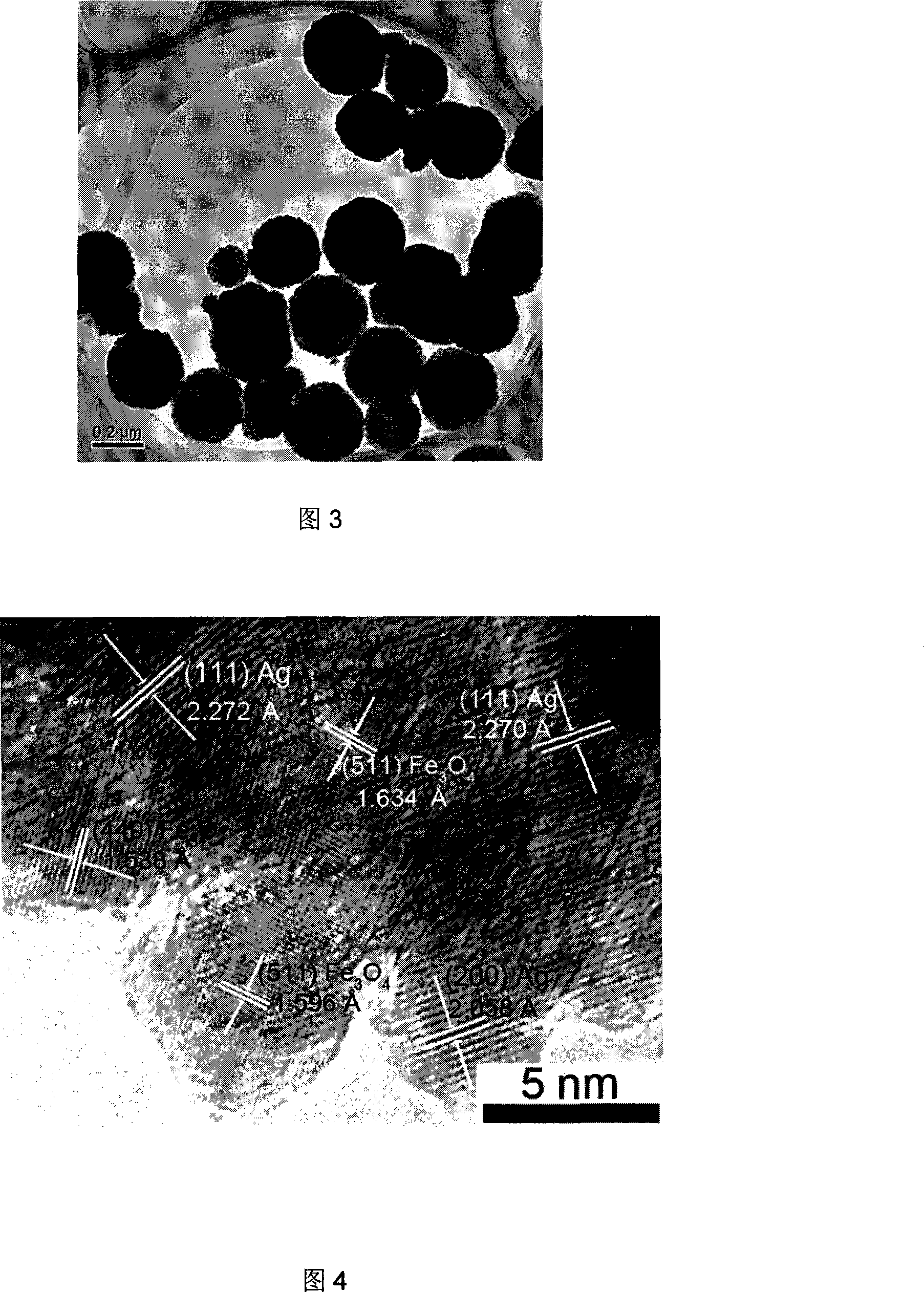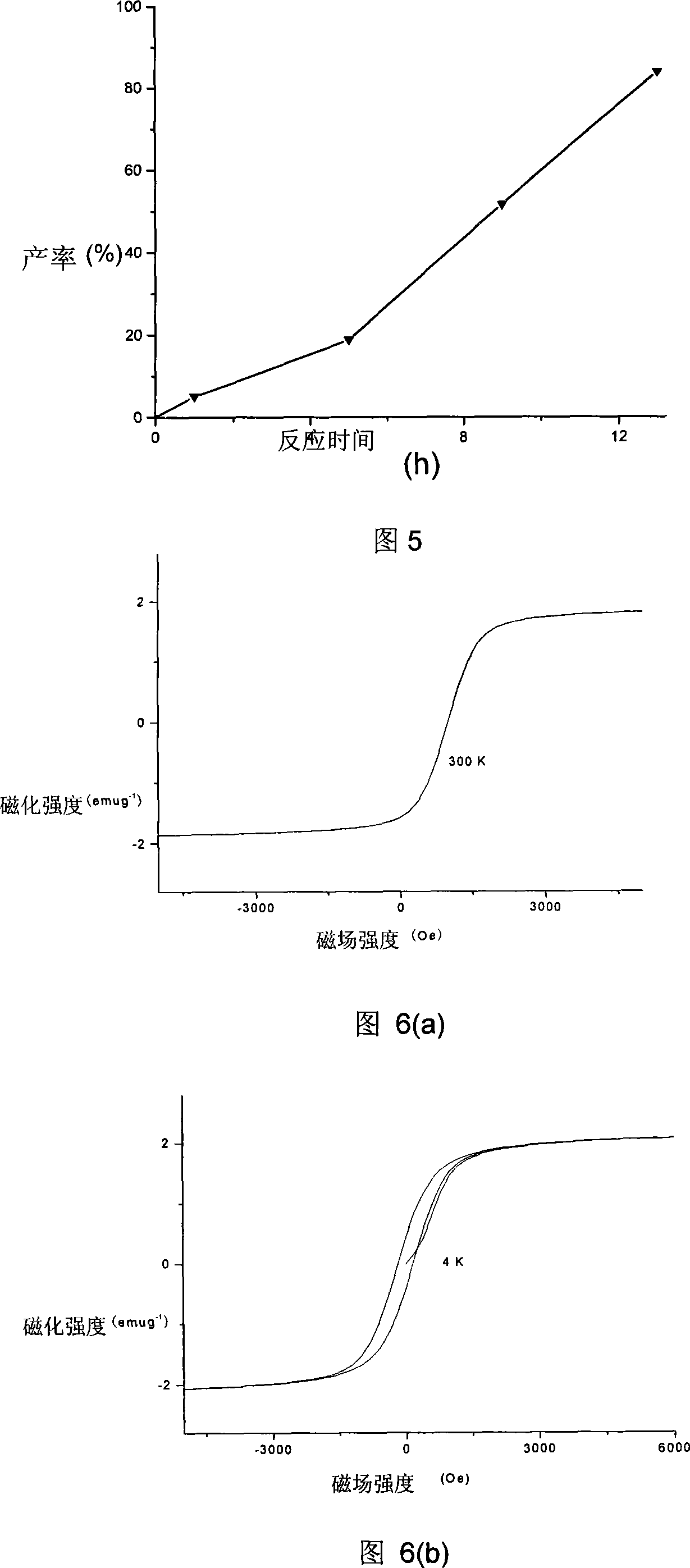Ag-Fe3O4 magnetic nano catalyst and its application in phenylethene epoxidation
A nano-catalyst, 1.ag-fe3o4 technology, applied in physical/chemical process catalysts, metal/metal oxide/metal hydroxide catalysts, organic chemistry and other directions, can solve the problems of small particle size of nano-catalysts and achieve solvent The effect of low pollution, convenient separation, excellent catalytic activity and stability
- Summary
- Abstract
- Description
- Claims
- Application Information
AI Technical Summary
Problems solved by technology
Method used
Image
Examples
Embodiment 1
[0027] Preparation of Ag-Fe 3 o 4 Composite magnetic nanocatalyst: 2.975 mmol FeCl 3 ·6H 2 O, 8.925mmol PVP (K30 molecular weight: 10000), 29.75mmol CH 3 COONa, 2.975mmol AgNO 3 Sequentially added to 35mL of ethylene glycol, the resulting solution was stirred in the dark until a uniform suspension was formed, and then the suspension was transferred to a stainless steel reaction kettle with a polytetrafluoroethylene liner capacity of 50ml. React at 180°C for 1 hour, then react at 200°C for 8 hours, then cool naturally to room temperature; the obtained brown-black product is sedimented and separated under the action of a magnet, and redispersed in absolute ethanol for cleaning. This cycle is repeated 3 times, and some ions on the surface , excess polymer and other impurities are washed off; the resulting solid is vacuum-dried at room temperature to finally obtain 0.555 grams of solid powder, namely Ag-Fe 3 o 4 Composite magnetic nanocatalysts.
[0028] Figure 1 is the obt...
Embodiment 2
[0033] Similar to the steps in Example 1, react at 185°C for 1 hour and 200°C for 8 hours to obtain Ag-Fe 3 o 4 The composite magnetic nano-catalyst particles have an average particle diameter of 225nm.
Embodiment 3
[0035] Similar to the steps in Example 1, react at 180°C for 1 hour and 210°C for 8 hours, and Ag-Fe is also obtained 3 o 4 The composite magnetic nano-catalyst particles have an average particle diameter of 306nm.
PUM
| Property | Measurement | Unit |
|---|---|---|
| particle diameter | aaaaa | aaaaa |
| particle size | aaaaa | aaaaa |
| particle size | aaaaa | aaaaa |
Abstract
Description
Claims
Application Information
 Login to View More
Login to View More - R&D
- Intellectual Property
- Life Sciences
- Materials
- Tech Scout
- Unparalleled Data Quality
- Higher Quality Content
- 60% Fewer Hallucinations
Browse by: Latest US Patents, China's latest patents, Technical Efficacy Thesaurus, Application Domain, Technology Topic, Popular Technical Reports.
© 2025 PatSnap. All rights reserved.Legal|Privacy policy|Modern Slavery Act Transparency Statement|Sitemap|About US| Contact US: help@patsnap.com



